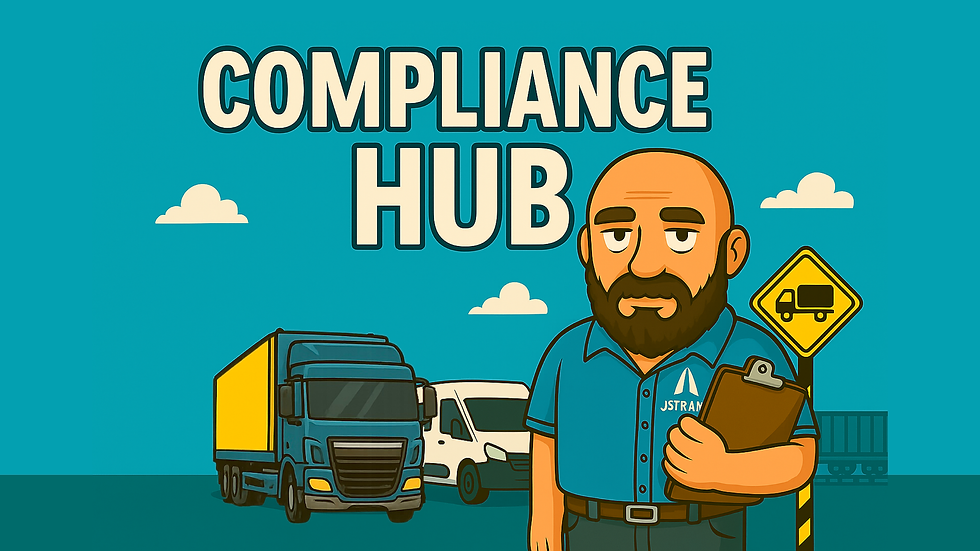How to Prepare for a Public Inquiry and What to Expect
- stuart47304
- Jul 8, 2025
- 4 min read

If you’ve been called to a Public Inquiry (PI) by the Office of the Traffic Commissioner, the stakes are high — but it’s not necessarily the end of your Operator Licence.
With proper preparation and a clear understanding of the process, you can demonstrate to the Traffic Commissioner (TC) that your business deserves to keep its licence and that any failings were isolated or resolved.
This guide walks you through:
How to prepare effectively
What to expect on the day
What documents to bring
How to handle questioning
How to present your case professionally
What happens after the hearing
Why You’ve Been Called to a Public Inquiry
Typically, the DVSA or TC has identified serious concerns about your:
Vehicle maintenance
Record keeping
Tachograph or driver hours compliance
Operating centre use
Financial standing
Repute or professional competence
Being called to PI doesn’t automatically mean your licence will be revoked — but it does mean you need to prove you’re willing and able to operate compliantly.
Step 1: Understand the Allegations
Your letter from the Office of the Traffic Commissioner will include:
The date and location of the PI
The reasons for the hearing
Copies of the DVSA report or evidence
Read it thoroughly and break down each issue into a checklist. Example:
Allegation | Evidence |
Missed safety inspections | Gaps in PMI records from Jan–May 2024 |
Tachograph misuse | No driver card downloads for 6 months |
Operating outside licence terms | Additional vehicle not declared |
This helps you address each point methodically.
Step 2: Seek Professional Help (If Needed)
You have the right to be represented. Many operators choose to work with:
A transport solicitor
A compliance consultant
An external transport manager
They can help you:
Prepare evidence
Draft a formal written statement
Attend the hearing with you
Present your case professionally
If the issues are complex — or you’re unsure — don’t go it alone.
Step 3: Collect and Organise Your Evidence
Bring a complete, clear, and professional bundle of documents to the hearing.
Include:
✅ Safety inspection planner
✅ PMI reports (15+ months)
✅ Defect reports and repair sheets
✅ Maintenance contracts
✅ Daily walkaround check records
✅ Tachograph downloads and infringement reports
✅ Driver licence check logs
✅ Financial standing evidence (bank statements, forecasts)
✅ Policies and procedures (e.g. record keeping, defect reporting)
✅ Evidence of any remedial action taken
Label everything clearly. Put it in date order. Make copies for:
The TC
The clerk
Yourself
Your representative (if attending)
Step 4: Prepare a Written Statement
You should include a concise, professional statement that:
Acknowledges the issues
Explains what went wrong (factually and honestly)
Details the action taken to correct it
Demonstrates what’s now in place to prevent recurrence
Example:
“We acknowledge that PMIs were missed in early 2024 due to poor planning and a change in maintenance provider. We have now engaged a new garage, created a 6-week inspection schedule, and implemented a maintenance calendar to ensure compliance going forward.”
Step 5: Rehearse Your Responses
The TC will ask direct questions. Be ready for:
“Why did you fail to carry out safety inspections?”
“How are you ensuring your vehicles are roadworthy today?”
“What have you done to improve record-keeping?”
“Why should I trust you to hold a licence?”
Be honest. Be specific. Don’t blame others. The TC wants to see personal responsibility and change.
Step 6: Know What to Expect on the Day
Arrive early, dressed smartly
Bring all documents in a folder or binder
Wait to be called into the hearing room
The TC will sit at the front, possibly with a DVSA representative present
You’ll be invited to present your case and answer questions
If you have a representative, they’ll usually speak first
You may be asked about vehicles, drivers, policies, past conduct, and future plans
It’s formal but not intimidating — as long as you’re prepared.
Step 7: Be Professional and Respectful
✅ Address the Traffic Commissioner as “Sir” or “Ma’am”
✅ Speak clearly and avoid jargon
✅ Be truthful — misleading statements will hurt your case
✅ Stay calm if challenged
✅ Don’t interrupt — wait to be invited to speak
A respectful attitude goes a long way.
Step 8: Show What’s Changed
The most powerful defence isn’t an excuse — it’s evidence of improvement.
If you’ve:
Hired a transport consultant
Introduced a maintenance planner
Set up digital record-keeping
Re-trained staff or yourself
Purchased compliant vehicles
Appointed an External Transport Manager
…bring proof. It shows you’re taking compliance seriously.
What Decisions Can the TC Make?
At the end of the hearing, the TC might:
Issue a formal warning
Curtail your licence (reduce vehicle authorisation)
Suspend your licence for a fixed period
Revoke your licence entirely
Disqualify you from holding a licence in future
Take no further action
The decision may be given immediately or sent in writing later.
After the Inquiry
Depending on the outcome:
Continue implementing your new systems
Send any requested follow-up documentation promptly
If you were allowed to continue operating, stay compliant — future issues will be treated more harshly
If your licence was revoked or curtailed, speak to a solicitor about appeal options or future applications
Conclusion
A Public Inquiry is a serious test — but it’s also a second chance.
Go in prepared, honest, and determined to improve. Many operators have emerged from a
PI with stronger systems, cleaner records, and a renewed commitment to compliance.
Remember: the Traffic Commissioner isn’t looking for perfection. They’re looking for competence, control, and a willingness to improve.
Next in the series:👉 Top Reasons Operators Lose Their Licence at a Public Inquiry
